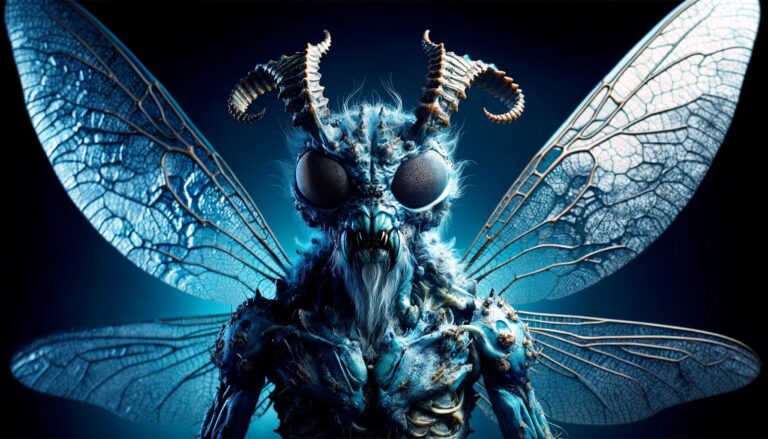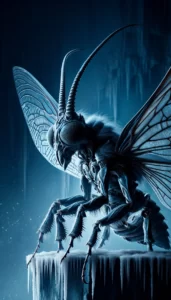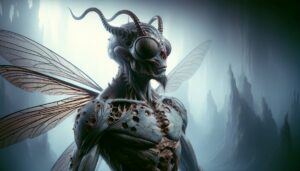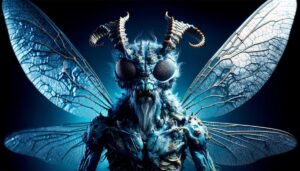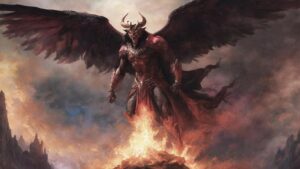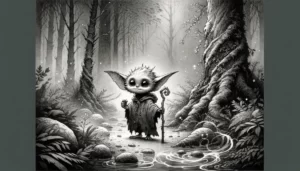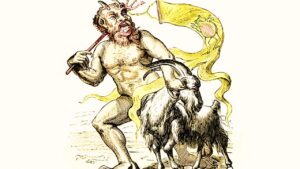Table of Contents
Beelzebub, a name that resonates with dark and mysterious connotations, has long captured the imagination of people across cultures and religions. Beelzebub is another name for Satan. Often associated with malevolent forces, Beelzebub’s presence in various mythologies and religious texts has sparked curiosity and intrigue. In this article, we delve into the origins, cultural representations, and modern interpretations of Beelzebub to unravel the complexities surrounding this enigmatic figure.
Etymology and Origins
The name Beelzebub has its roots in ancient Semitic languages, particularly Hebrew, where it is believed to mean “Lord of the Flies.” This ominous title is thought to be a derogatory reference to the god Baal, challenging the legitimacy of his worship. Beelzebub’s presence is also noted in Christian demonology, where he is often considered one of the seven princes of Hell.
Religious and Mythological References
Judeo-Christian Tradition: In Christian demonology, Beelzebub is often portrayed as a high-ranking demon associated with gluttony, deceit, and the temptation of humans. Some sources even identify him as a chief lieutenant of Satan.
Islamic Tradition: Beelzebub, known as Azazel in Islamic tradition, is associated with rebellion and disobedience. His refusal to bow to Adam is a significant element in Islamic narratives.
Cultural Representations
Literature and Art: Beelzebub’s malevolent persona has inspired numerous works of literature, including John Milton’s “Paradise Lost,” where he plays a prominent role in the fall of man. Artists throughout history have depicted Beelzebub in various forms, contributing to his visual representation.
Pop Culture: From movies to video games, Beelzebub has made his mark on contemporary pop culture. Characters inspired by or directly named after Beelzebub often embody elements of darkness, temptation, and chaos.
Psychological and Symbolic Interpretations:
Psychological Perspectives: Some scholars interpret Beelzebub and similar figures as symbolic representations of psychological aspects, such as inner demons, desires, or the shadow self.
Symbolism in Modern Society: Beelzebub’s symbolism extends beyond religious and mythological contexts. In modern discussions, the name may be invoked metaphorically to represent corruption, deceit, or the allure of forbidden desires.
Beelzebub, a figure entrenched in the annals of mythology and demonology, shares intriguing connections with various gods and creatures across diverse cultural narratives. One prominent association is with Baal-Zebub, the Philistine deity whose name echoes through ancient Semitic traditions. Beelzebub’s nomenclature itself is a testament to this connection, as it is believed to be a derogatory adaptation of Baal-Zebub, transforming a once revered god of fertility into a symbol of malevolence.
In the realm of Christianity, Beelzebub is often linked with Satan, embodying the very essence of evil and rebellion against divine order. The parallels between Beelzebub and Satan are profound, both figures representing the adversarial forces challenging the benevolence of a higher power.
Islamic tradition introduces Azazel, a fallen angel or jinn associated with rebellion and disobedience. Here, Beelzebub finds kinship in the narrative of defiance, as Azazel’s refusal to bow to Adam mirrors the rebellious spirit attributed to Beelzebub in other cultural contexts.
In the Hellenistic pantheon, echoes of Beelzebub resonate in the figure of Pan, the wild and primal god of nature. Both entities embody untamed forces, challenging the structured order and introducing an element of chaos.
The thematic resonance continues in German folklore with Mephistopheles, a demon often associated with making bargains and tempting humans, mirroring Beelzebub’s role as a seducer and corrupter.
As Beelzebub transcends cultural boundaries, glimpses of shared traits emerge in deities like Ahriman from Zoroastrianism, Set from Egyptian mythology, Lilith in certain traditions, Pazuzu from Mesopotamian lore, and Asmodeus in various demonologies.
In exploring these connections, Beelzebub emerges not as a solitary figure but as a thread woven into the rich tapestry of global mythologies—a symbolic embodiment of rebellion, temptation, and the eternal struggle between chaos and order across diverse belief systems.
What is Beelzebub the sin of?
Beelzebub is not specifically associated with a particular sin in traditional Christian doctrine. However, in popular culture and literary works, Beelzebub is often linked with sins such as temptation, deception, and rebellion.
What is the meaning behind Beelzebub?
The name Beelzebub is thought to have originated from the Philistine god Baal-Zebub and is often interpreted to mean "Lord of the Flies." It has been historically associated with disdain and derogatory connotations.
What is Beelzebub in the Bible?
Beelzebub is mentioned in the New Testament of the Bible, particularly in the Gospels. In Christian tradition, Beelzebub is often considered a demonic figure and one of the chief devils. The name is sometimes used interchangeably with Satan.
How powerful is Beelzebub?
The power attributed to Beelzebub varies across different religious and cultural contexts. In demonology, Beelzebub is often depicted as a high-ranking demon with significant influence and power.
Is Beelzebub a girl or boy?
Beelzebub is typically portrayed as a male figure in religious and mythological traditions.
Who is Beelzebub's wife?
There is no widely recognized or traditional depiction of Beelzebub having a specific wife in religious or mythological texts.
What language is Beelzebub?
The name Beelzebub has its origins in ancient Semitic languages, particularly Hebrew.
What does Beelzebub like?
In religious and mythological contexts, Beelzebub is often associated with deception, temptation, and the corruption of moral values.
Who does Beelzebub fight?
In religious narratives, Beelzebub is often seen as an adversary, fighting against the forces of good. The exact adversaries can vary across different stories and traditions.
Is Beelzebub always hungry?
The idea of Beelzebub being "always hungry" is more of a literary or cultural interpretation rather than a consistent trait across religious traditions.
How tall is Beelzebub?
There is no specific height attributed to Beelzebub in religious or mythological texts; physical descriptions vary in different interpretations.
Does Beelzebub have horns?
Traditional depictions of Beelzebub in art and literature sometimes include horns, as is common in representations of demonic figures.
How do you beat Beelzebub?
The concept of "beating" Beelzebub is often metaphorical, representing the triumph of good over evil. In religious contexts, spiritual and moral strength are emphasized.
What is Beelzebub's personality?
Beelzebub's personality is often depicted as cunning, malevolent, and ambitious, with a penchant for deception and temptation.
What pronouns does Beelzebub use?
In traditional depictions, masculine pronouns (he/him) are commonly used for Beelzebub.
Is Beelzebub an Archdemon?
Beelzebub is sometimes referred to as an Archdemon, signifying a high-ranking demon in demonology.
Is Beelzebub a scientist?
No, Beelzebub is not traditionally portrayed as a scientist. The association with science is more likely a modern reinterpretation or fictional depiction.
Who is the villain in Beelzebub?
In various stories and interpretations, Beelzebub can be portrayed as a villain, often representing the forces of darkness or temptation.
Who is Beelzebub in slime?
In popular culture, particularly in anime and manga, "Beelzebub" can refer to a character or series. In this context, Beelzebub is often depicted as a mischievous demon or supernatural being.
